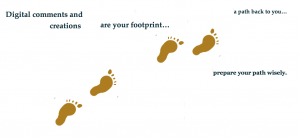Update 2019:
The information from this hashtag has moved to PACE, but the resources are here: HiveNYC Resources.
Prior to 2019:
It is increasingly apparent to me that the opportunity gap is increasing, and that understanding the connected world, both virtual and physical, is part of education.
I am particularly impressed with the mission of Mozilla: “Our mission is to promote openness, innovation & opportunity on the Web.” Mozilla offers tools for teachers that present students with the ability to participate as equals in the online world, stressing openness, innovation, and opportunity in positive ways. Mozilla invites all of us to contribute to this world.
I have joined #teachtheweb [note: the twitter hashgtag still connects us #teachtheweb] so that both my students and I can become web literate, and thus contributors to the future of the web, thus becoming active participants with the opportunities that manifest because of it. We will know the net and respond as global citizens. The project is free and open, as learning should be.
Thank you, Mozilla and its communities for providing this opportunity.
Pulling in…from #teachtheweb:
“…we should be pulling the informal technologies and practices of our learners into the formal and informal learning spaces our societies rely on. We should allow them to mentor us, as we do the same.
Making, as well as learning, is a culture-influenced and influencing phenomenon, therefore it’s important to understand the cultural influences that shape our makes, and the degree to which our makes shape culture. This seems particularly important when we think of making digital artifacts, since this begins with the premise of access. In online learning spaces, who is not represented, and why is that?”
To this I add: Students today enjoy the connectedness of social networking; it is part of their very being. My goal is to bring my instruction into that cloud to teach the content required in ways that inspire online responsibility and ethics in this new, very public world.
In addition, as I connect with other educators about the emerging issues and pedagogy of connected learning, I reflect here on those issues, pedagogy, and connections that make for a diverse dialogue about what education could be. These are my reflections.
Please remember we are all learning. Neither my words nor those of my students represent our school district, and our words belong to each of us as we strive to become better learners.
We question, we converse, we express, we suggest, we explore. We ask, “What Else?”
I am learning together with my colleagues in my professional learning neighborhood as my students are also learning together as they build their neighborhoods and practice digital citizenship.
And #teachtheweb continues:
“The aim is to create safe places for all people to experiment as making always has failure.
If we are afraid of failure, we may never create new things, which means we won’t learn to solve the toughest problems.
It’s time to face our fear of failure, rely on one another to be collaborative and begin experimenting in the digital space.
Let’s embark on peer supported experimentation in varying forms of creation, and we’ll start to see that digital tools allow us to make and reconnect both in the digital as well as the physical world. We can use these tools to push our learners on their own journey of life-long learning as well as for specific exploration of particular topics.”

Teach the Web is licensed under a Creative Commons Attribution 3.0 Unported License.

